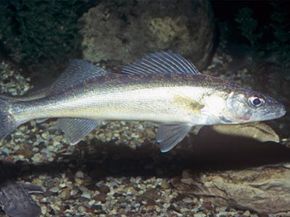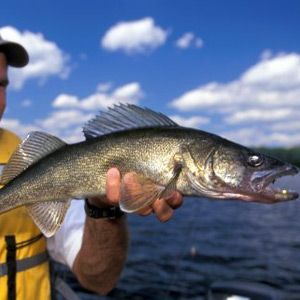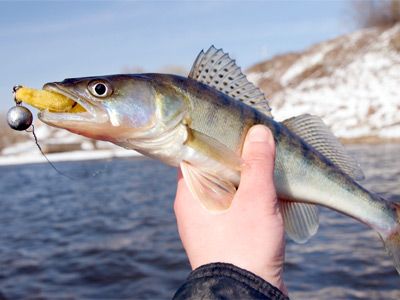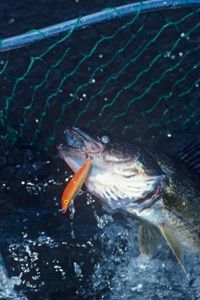The pre-spawn and spawning periods can be an excellent walleye fishing time, although anglers should do their part to show restraint and not overfish the spawning females. Remind yourself that you would actually like to fish walleye again next year. Also, be sure to check with your local Department of Natural Resources for any fishing regulations.
So what's the easiest way to find the best staging and spawning sites? It's a good bet that the walleye are where they were last year and every year before that. Another good tip is to ask the locals. Once you've located the popular spawning spot, look around for the nearest flat-bottomed spot, and you'll likely find the staging area.
As we've seen, the timing of walleye activity depends on the water temperature. If you keep careful track of that, you'll have a good idea of where the fish are in their cycle. Also, mind the time of day. Walleye often have inactive periods during the day. Many of the seasoned walleye catchers go out around dusk -- to catch them in an active state -- and stay out until late.
As with most endeavors, your equipment can make or break you. A high-quality rod makes it easier to feel the bite, since not every hit is a thunderbolt. A 4- to 8-pound (1.8 to 3.6 kg) test line is recommended [source: Shining Falls Lodge]. Shallow diving crankbaits are useful along the shore [source: McClelland]. A variety of jigs -- vertical, pitching and trolling -- may work in different situations. Even different colored jigs can make a difference, depending on the level of water clarity or turbidity [source: Kavajecz].
Walleye are typically rather languid, so it's best to keep a slow pace. Drift along slowly with the current to catch river-spawning walleye. Or troll along the rip-rap shore, using a combination of longer and shorter rods to place lures at different depths. And use relatively large baits, such as large minnows [source: Pitlo].
Now that you've got the lay of the water, have fun chasing the walleye!



